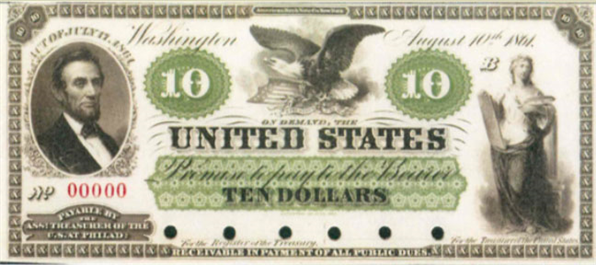
A little over 3 years ago I developed an interest in collecting paper money issued by the United States. After several months of research, I decided to focus on Missouri National Banknotes issued by nationally chartered Missouri banks from 1865 to 1935. Through this new hobby I have met many interesting people involved in collecting both paper money and coins. I have also gained an incredible amount of knowledge and history about the U.S. monetary system. In this blog section I will periodically share some of the information I have learned as well as copies of Missouri national banknotes I have been able to acquire.
Did you know that the United States has issued 13 different types of paper money and that at one time the United States had 6 different types of currency in circulation? The first paper money to be issued by the United States was authorized by Congress on July 17, 1861. Paper money was in circulation prior to 1861 in the form of “colonial currency” issued by the individual American Colonies and was redeemable in Spanish Milled Dollars (large silver coin). Paper money was authorized by the United States Congress as a means to provide emergency funding for the Civil War. Prior to 1861 most U.S. money was in the form of gold, silver and copper coins. During times of crisis, in particular war, because of the intrinsic value of the metal, these coins tend to be hoarded by individuals and businesses, which is exactly what happened during the Civil War. The first paper money issued was called “Demand Notes” because they were payable upon demand in coin, essentially the money was government IOUs. The first sheets of currency, four notes per sheet, were delivered to the Treasury Department on August 23, 1861. The notes had to be hand signed and separated (cut) by hand with scissors. On August 26, 1861 the first notes were released to the public and quickly became known as “greenbacks” due to the color of ink used on the backs of the notes. More to come.